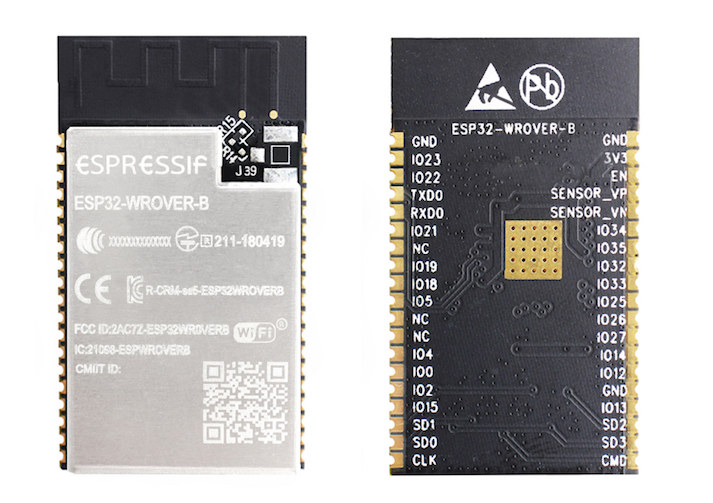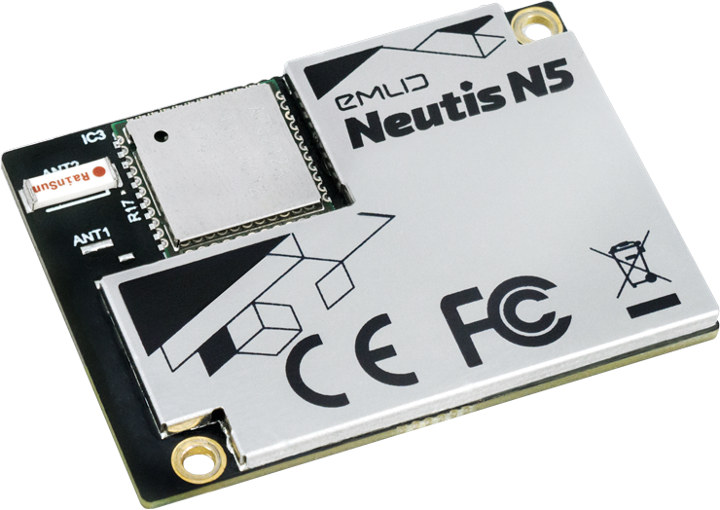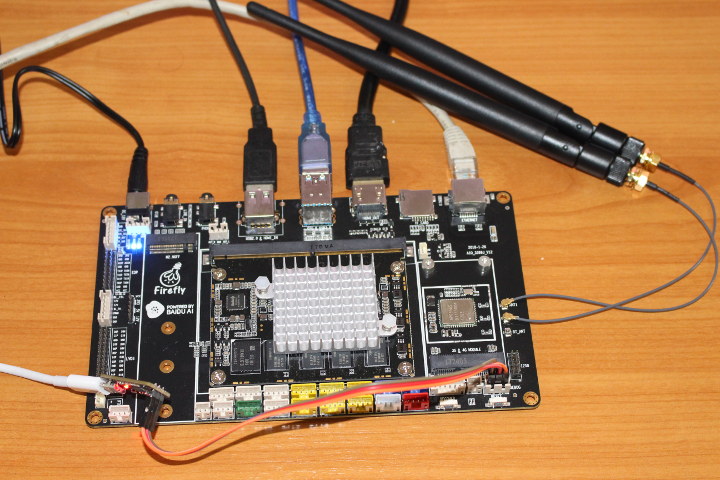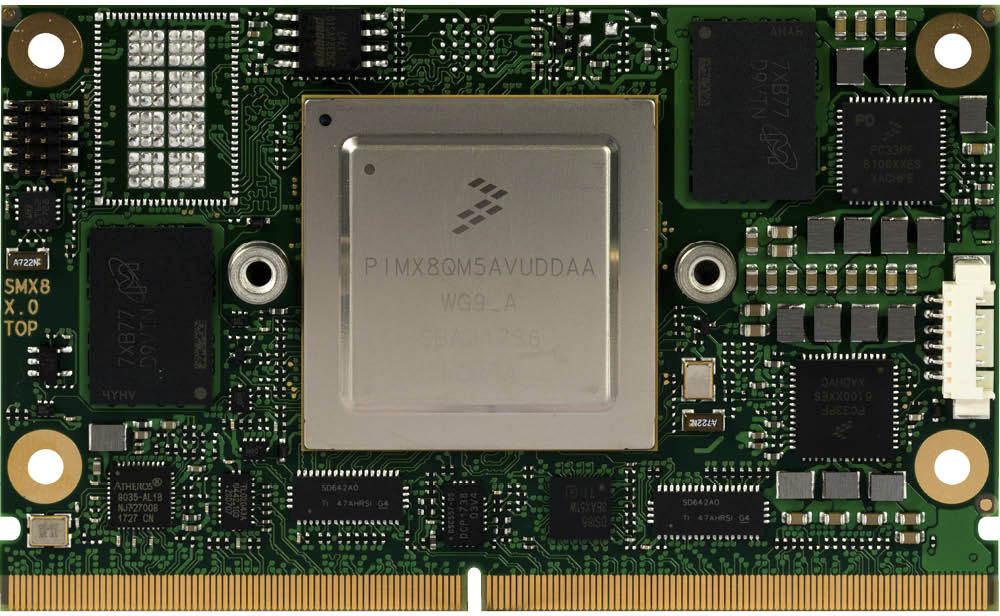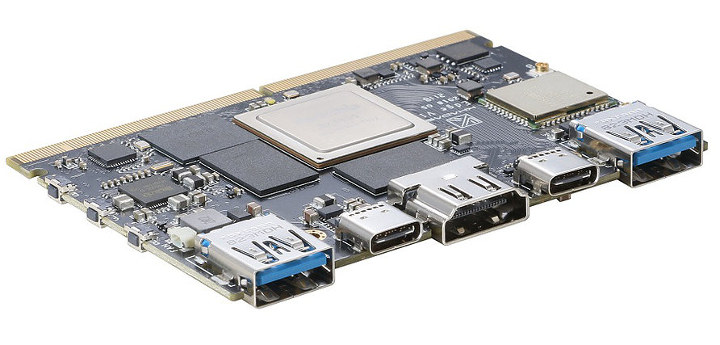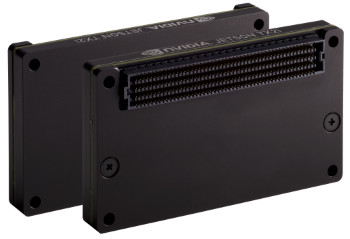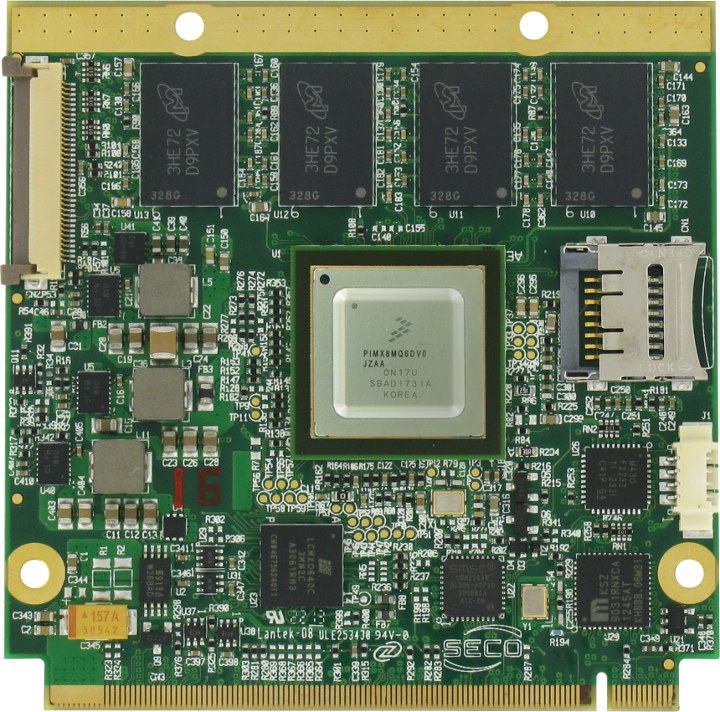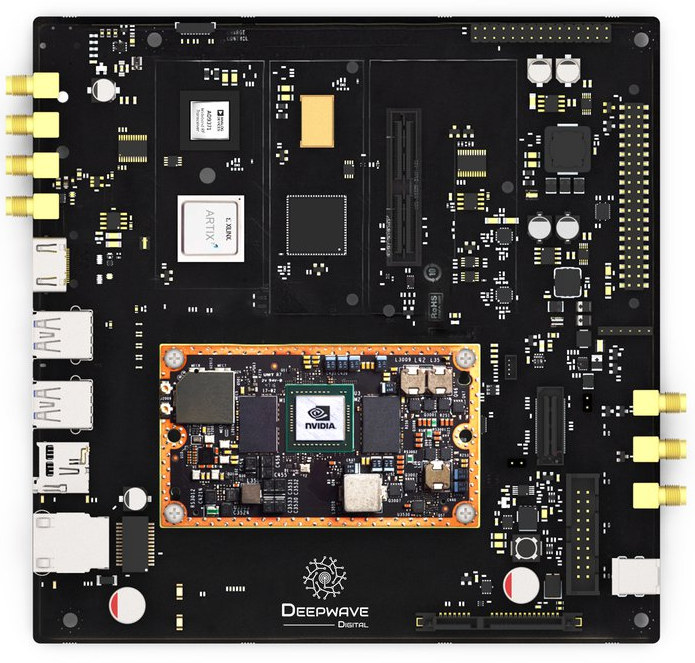ESP32 processor can support PSRAM, and so far I had seen boards or modules with up to 4MB RAM, but if you need more memory, Espressif Systems has now launched ESP32-WROVER-B module with 8MB SPI PSRAM. ESP32-WROVER-B module specifications: WiSoC – Espressif ESP32-D0WD with dual core processor up to 240 Mhz; 5x5mm package Connectivity 2.4GHz WiFi 802.11 b/g/n up to 150 Mbps Bluetooth 4.2 LE Two antenna designs: PCB antenna or IPEX connector External Memory – 8MB SPI Pseudo Static RAM (PSRAM) Storage – 4MB external SPI flash I/Os – Capacitive touch, SD card interface, Ethernet, SPI, UART, I2S, I2C, GPIOs, VP/VN, etc… Power Supply – 2.7 to 3.6V Dimensions – 31.4 x 18.0 x 3.3 mm Certifications – FCC/CE-RED/IC/TELEC/KCC/SRRC/NCC ESP32-WROVER-B should be software compatible with other ESP32 modules. It works ESP-IDF framework based on FreeRTOS with LwIP ( light-weight Internet Protocol). TLS 1.2 hardware acceleration is built-in, and secure OTA […]
Neutis N5 Allwinner H5 CPU Module and Development Kit are now up for pre-order
Emlid Neutis N5 system-on-module (SoM) powered by Allwinner H5 processor was unveiled right before Embedded World 2018 in February with an expected launch date scheduled for April. There have been some delays but the Allwinner H5 CPU module and corresponding development kit are now up for pre-order with delivery slate for the end of August. Neutis N5 SoM Neutis N5 specifications: SoC – Allwinner H5 quad core Arm Cortex-A53 processor @ up to 1.3 GHz with Arm Mali-450MP4 GPU System Memory – 512 MB DDR3 RAM Storage – 8 GB eMMC flash Connectivity – Wi-Fi 802.11 b/g/n. Bluetooth 4.0 dual-mode BLE with on-board antenna and u.FL connector for optional external antenna HW Security – Tamper-resistant dedicated crypto chip (secure element) for storing cryptographic keys, unique ID, random number generation and more 2x DF40 80-pin board to board X1 and X2 connectors with 38x GPIOs 4x UART, 3x I2C, 2x SPI, […]
AIO-3399J Development Board Review with Ubuntu 16.04
Regular readers will know that Firefly team sent me several of their Rockchip boards for evaluation, and I started with a review of ROC-RK3328-CC development board powered by Rockchip RK3328 processor. This time, I went with the high-end AIO-3399J board comprised of a features-packed baseboard and a Rockchip RK3399 system-on-module. Just like with the previous review, I’ve decided to focus on Linux support, in this case Xunbuntu 16.04, and I’ll do an Android review on the company releases Android 8.1 for Firefly-RK3399 board. First Boot with AIO-3399J Board Before booting the board, I inserted the heatsink, and connected the provided WiFi antennas. I also connected some devices and cables, including a mouse, the male to male USB cable to the top USB 3.0 (OTG) port for firmware update, a HDMI cable to my TV, and Ethernet cable, as well as the serial debug board. The final step was to connect […]
Congatec conga-SMX8 is a SMARC 2.0 Module Based on NXP i.MX8 Processor
We’ve already seen some SMARC 2.0 SoM based on NXP i.MX8 processor with for instance, i.MX 8M based SECO SM-C12. We now have at more choice thanks to Congatec which just announced conga-SMX8, the company’s first SMARC 2.0 Computer-on-Module based on the NXP i.MX8 Arm Cortex-A53/A72 processor. conga-SMX8 SoM specifications: SoC (one or the other) NXP i.MX8 Quad Max with 2x Arm Cortex-A72, 4x Arm Cortex-A53, 2x Arm Cortex-M4F, 2x Vivante GC7000XSVX GPU NXP i.MX8 QuadPlus with 1x Arm Cortex-A72, 4x Arm Cortex-A53, 2x Arm Cortex-M4F, 2x Vivante GC7000Lite/XSVX GPU NXP i.MX8 DualMax with 2x Arm Cortex-A72, 2x Arm Cortex-M4F, 2x Vivante GC7000Lite/XSVX GPU System Memory – Up to 8 GB LPDDR4 memory | 3200 MT/s Storage – Up to 64GB eMMC flash, micro SD 3.0 card socket Other On-Module Chips 2x Gigabit Ethernet transceiver Optional M.2 1216 WiFi module (soldered down) USB hub 314-pin MXM Edge connector with Storage […]
Khadas Edge is Both a Standalone Board and a System-on-Module powered by Rockchip RK3399
One of the two most common type of Arm boards are single board computers with everything from processor to memory/storage to ports is placed on a single PCB, and system-on-modules with processor, memory and storage, and sometimes some extra chips with for network connectivity, audio and power management that are supposed to be inserted into a baseboard exposing connectors and headers. The upcoming Khadas Edge board is a little different since it combines both categories into one board with USB receptacles and HDMI output as well as 314-pin MXM3 edge connector to connect to Khadas Captain baseboard, or any other custom compatible baseboard. Khadas Edge will come in three variants (Basic/Pro/Max) with the following specifications: SoC – Rockchip RK3399 hexa core processor with 2x Arm Cortex-A72 up to 1.8GHz, 4x Cortex-A53 up to 1.5GHz, Arm Mali T864 GPU with support for OpenGL ES1.1/2.0/3.0/3.1, OpenVG1.1, OpenCL, DX11, VPU with4K VP9 and 4K […]
NVIDIA Jetson TX2i Module is Designed for Industrial Environments
NVIDIA Jetson TX2 “Artificial Intelligence Computer” module was announced in March 2017 with a Tegra X2 hexa-core processor, a 256-core Pascal GPU, 8GB RAM, 32GB storage, and support for 4K 60 fps encoding and decoding. But it turns out NVIDIA announced an rugged version of the module dubbed Jetson TX2i designed for reliable operation in harsh industrial environments in March of this year. NVIDIA Jetson TX2 and TX2i are pin-to-pin compatible, and can run the same software, but TX2i has been designed and tested for rougher conditions. Feature Jetson TX2 Jetson TX2i Shock 140G, 2ms 140G, 2ms Vibration 10Hz ~200Hz, 1g & 2g RMS Random: 5g RMS 10 to 500Hz Sinusoidal: 5g RMS 10 to 500Hz Temp Range -25°C – 80°C -40°C – 85°C Humidity 85°C / 85% RH, 168 hours -10°C to 65°C / 95% RH, 240 hours Operating Life 5 Years (GB at 35C: MTBF=1,747,520 hours GF at […]
SECO Q7-C25 / Q7-C26 QSeven SoMs Feature NXP i.MX 8M / i.MX 8Quad Processor
We’ve previously covered SECO’s SM-C12 SMARC 2.0 i.MX 8M system-on-module, but the company has just unveiled two new module families which are compliant with Qseven – another SoM standard – and powered by NXP i.MX 8M dual/quad core Cortex A53 processor and NXP i.MX 8Quad Cortex A53 or A72/A53 SoC with respectively Q7-C25 and Q7-C26 systems-on-module. SECO Qseven i.MX 8/8M System-on-Module Q7-C25 / Q7-C26 specifications: SoC Q7-C25 (one or the other) NXP i.MX 8M Quad 4x Cortex-A53 cores up to 1.5GHz, 1x Cortex-M4 F real-time core, Vivante GC7000Lite GPU, VPU NXP i.MX 8M Dual 2x Cortex-A53 cores up to 1.5GHz, 1x Cortex-M4 F real-time core, Vivante GC7000Lite GPU, VPU NXP i.MX 8M QuadLite 4x Cortex-A53 cores up to 1.5GHz, , 1x Cortex-M4 F real-time core, Vivante GC7000Lite GPU no VPU Q7-C26 (one or the other) NXP i.MX 8QuadMax 2x Cortex-A72 cores + 4x Cortex-A53 cores + 2x Cortex-M4F cores, 2x Vivante […]
Air-T Artificial Intelligence Radio Transceiver SDR Platform Combines NVIDIA Jetson TX2 and Xilinx Artix-7 FPGA (Crowdfunding)
If often write about low end and cheaper hardware on this blog, but not in this post. Deepwave Digital Air-T (Artificial Intelligence Radio – Transceiver) is a high-end software defined radio platform with continuous frequency coverage from 300 MHz to 6 GHz. The board combines AD9371 RFIC transceiver providing up to 2 x 2 MIMO of 100 MHz of receiving bandwidth, a Xilinx Artix-7 FPGA, and NVIDIA Jetson TX2 module. Air-T hardware specifications & key features: Software-defined Radio Analog Devices 9371 2×2 MIMO transceiver 2 x RX channels (100 MHz each) 2 x TX channels (100 MHz each) Auxiliary RX channels: Observation & Sniffer. Note: Can use either Observation or Sniffer at one time; utilizes one of the RX channels NVIDIA Jetson TX2 for processing 256 NVIDIA CUDA core GPU 6 CPU cores – 2x NVIDIA Denver2, 4x Arm Cortex-A57 8GB RAM 32GB eMMC flash Xilinx Artix-7 FPGA with75k logic […]


